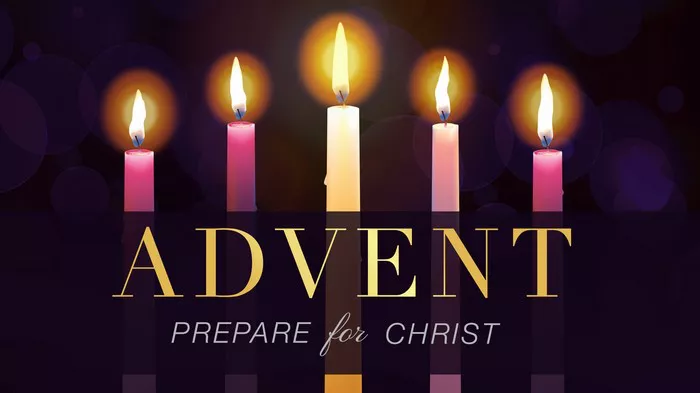Advent, a time of anticipation and preparation, holds profound significance within the Catholic faith. It marks the beginning of the liturgical year and serves as a period of spiritual reflection leading up to the celebration of the birth of Jesus Christ on Christmas Day. Rooted in centuries-old traditions and rich symbolism, Advent offers believers an opportunity to deepen their faith, cultivate hope, and embrace the promise of salvation.
Origins and History
The word “Advent” is derived from the Latin word “adventus,” meaning “coming” or “arrival.” Its origins can be traced back to the early centuries of Christianity when the church began to establish a liturgical calendar to commemorate key events in the life of Jesus Christ. While the specific customs and practices associated with Advent have evolved over time, its fundamental purpose remains constant: to prepare believers for the celebration of Christ’s birth and to anticipate his second coming.
The observance of Advent as a distinct liturgical season began to take shape in the Western Church during the late fourth and early fifth centuries. Initially, Advent was a period of fasting and penance, akin to the Lenten season preceding Easter. However, as the focus shifted to joyful anticipation rather than solemn repentance, the character of Advent evolved to incorporate elements of both preparation and celebration.
Themes and Symbols
Central to the observance of Advent are the themes of hope, peace, joy, and love, represented by the four candles of the Advent wreath. Each week of Advent, a new candle is lit, symbolizing the increasing light of Christ shining into the world. The gradual illumination of the wreath serves as a visual reminder of the growing anticipation of Christ’s birth and the spiritual journey toward his coming.
The color purple, often used in liturgical vestments and decorations during Advent, symbolizes penance, preparation, and royalty. It reflects the solemnity of the season while also conveying a sense of anticipation and expectation. In some traditions, a rose-colored candle is lit on the third Sunday of Advent, known as Gaudete Sunday, symbolizing joy and rejoicing in anticipation of the coming Messiah.
Liturgical Practices
Throughout Advent, Catholics engage in a variety of liturgical practices and devotional activities to prepare their hearts and minds for the celebration of Christmas. These may include the recitation of special prayers, such as the “O Antiphons” or the “Magnificat,” which express longing for the Messiah and praise for God’s faithfulness. Additionally, the Advent wreath is often used as a focal point for prayer and reflection, with families and communities gathering to light the candles and meditate on the meaning of the season.
The Sacrament of Reconciliation, also known as Confession, plays a significant role in Advent preparation, offering believers the opportunity to repent of their sins and receive God’s mercy and forgiveness. By participating in this sacrament, Catholics are invited to examine their consciences, reconcile with God and their neighbors, and make a renewed commitment to living lives of holiness and virtue.
Scriptural Readings
The liturgical readings for Advent draw primarily from the prophetic texts of the Old Testament, particularly the writings of Isaiah, which foretell the coming of the Messiah. These passages serve as a reminder of God’s promises to his people and the fulfillment of those promises in the person of Jesus Christ. In addition to the Old Testament prophecies, the Gospel readings for Advent focus on the events leading up to Christ’s birth, including the annunciation to Mary, the visitation of the shepherds, and the coming of John the Baptist.
By immersing themselves in the sacred scriptures during Advent, Catholics are invited to enter more deeply into the mystery of Christ’s incarnation and to reflect on the profound implications of God’s love made manifest in human form. Through prayerful meditation on the Word of God, believers are nourished and strengthened in their faith, finding inspiration and guidance for their spiritual journey.
Advent Traditions
In addition to liturgical practices, Advent is marked by a variety of cultural and familial traditions that vary from region to region and from family to family. These may include the decoration of homes and churches with Advent wreaths, nativity scenes, and other symbols of the season. Many families also observe Advent calendars, which contain a daily devotional or scripture reading to help them journey through the season of preparation.
Other popular Advent traditions include the singing of hymns and carols, the performance of nativity plays and pageants, and the sharing of meals and fellowship with loved ones. These customs serve to reinforce the spiritual significance of Advent while also fostering a sense of community and shared faith among believers.
Conclusion
In the Catholic tradition, Advent is more than just a countdown to Christmas; it is a sacred season of preparation, expectation, and hope. Through prayer, reflection, and participation in liturgical rites and traditions, believers are invited to journey with Mary and Joseph to Bethlehem, eagerly awaiting the birth of the Savior. As we light the candles of the Advent wreath and listen to the words of the prophets, may we open our hearts to receive the gift of God’s love and grace, preparing ourselves to welcome Christ into our lives anew this Christmas season.

